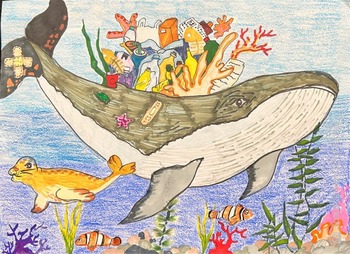 Artwork by Lydia X. (Grade 4, Commonwealth of the Northern Mariana Islands), winner of the Annual NOAA Marine Debris Program Art Contest.
Spring is on its way!
We're excited to leap into your inboxes today with some seasonal updates from the NOAA Marine Debris Program! Here's what you can find in this newsletter:
Career & Project Highlights:
Student Opportunities:
Educator Opportunities:
Funding Opportunities:
Plus, we're on a roll with this season's upcycling craft activity: Caterpillars and butterflies made from cardboard tubes!
Enthusiastically,
Alexandria Gillen
NOAA Marine Debris Program Education Specialist
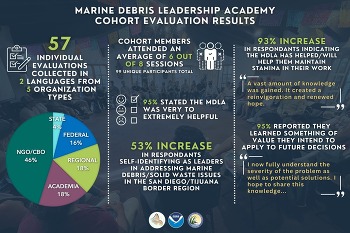 This graphic demonstrates our cohort results from the end of program evaluation. Click the image or check out the blog for additional detail (Credit: Empress Holliday).
Marine debris education isn't just for youth - Adults have a lot to learn about the issue as well! Check out this recent project from the Tijuana River National Estuarine Research Reserve with support from the NOAA Marine Debris Program. Among other project activities, including the development of a community-driven circular economy pilot project, capturing and characterizing trash, removing debris in critical natural habitats, and the development of a binational emergency response guide, the ResiDUOS project implemented a Marine Debris Leadership Academy (MDLA) for local leaders with diverse knowledge and expertise from the United States and Mexico. The MDLA incorporated multiple learning methods to expand participant knowledge, sharing practical knowledge, involving participants in field experiences, and creating art.
Best for: Educators, Non-formal audiences
Applicable Region(s): Anywhere
 The publication of two new marine debris data sets for the Science on a Sphere network is among the many accomplishments of the NOAA Education community in 2023 (Credit: NOAA).
The 2023 NOAA Education Annual Report is out! Explore short highlights, new resources, and some of our favorite photos that showcase what our programs have been up to over the past year.
NOAA Education reaches preschoolers through retirees both inside and outside the classroom, covering topics that span from the surface of the sun to the depths of the ocean. Each chapter in this report showcases our activities in fiscal year 2023 through short highlights, photos, and new resources connected to the goals in the NOAA Education Strategic Plan.
Best for: Anyone
Applicable Region(s): Anywhere
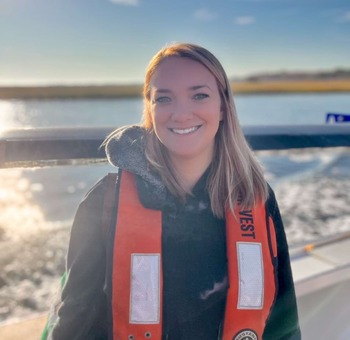 Jessica Conway, response specialist (Credit: NOAA).
Help your students imagine a career in marine debris response with this National Ocean Service (NOS) career profile! Jessica is a response specialist, and she supports the Marine Debris Program’s emergency response mission. Her work includes the development of response preparedness resources, conducting response-related training and exercises, and coordinating collaborative groups of response stakeholders.
Learn more about Jessica’s career journey, and the careers of many other members of the NOS team on the NOS Careers page!
Best for: Anyone
Applicable Region(s): Anywhere
 Artwork by Simone L. (Grade 1, Michigan), winner of the Annual NOAA Marine Debris Program Art Contest, who shared: "I want to invent a machine that goes underwater to pick up all the debris and rescues all the sea animals."
Are you a K-12 educator looking to integrate creativity, innovation, and problem-solving concepts into your classroom through invention education? Apply today to the U.S. Patent and Trademark Office's (USPTO) National Summer Teacher Institute! Since it first launched, 444 educators from all 50 states, Puerto Rico, Guam, and Okinawa, Japan have benefited from this program.
Applications due March 31, 2024
Best for: Educators
Applicable Region(s): All U.S. States and Territories
 Apply for support for your community project to prevent marine debris (Credit: Salem Sound Coastwatch).
California Ocean Litter Strategy participant Algalita’s Student Mini-Grant application is officially LIVE! Changemakers ages 11-25 from across the US and around the world are welcome to apply, and winners will be granted $300-$2,000. Application deadline is April 15, 2024.
This funding opportunity acknowledges diverse approaches to envisioning a world free of plastic pollution. Eligible focus areas include social justice, philosophy, business, zero waste, environmental justice, social science, marketing, chemistry, science, art, and more! Apply regardless of your focus, as long as you can relate it to ending plastic pollution, given its widespread impact on our lives.
Applications due April 15, 2024
Best for: Middle School, High School and Older, Educators, Non-formal Audiences
Applicable Regions: Anywhere
 Artwork by Bohdan A. (Grade 6, Massachusetts), winner of the 2021 Annual NOAA Marine Debris Program Art Contest.
Celebrate Endangered Species Day (May 17) by having your classroom or individual students participate in the Greater Atlantic Regional Fisheries Office Marine Endangered Species Art Contest. Endangered and threatened species need our help. Students’ artwork will showcase their knowledge and commitment to protecting these animals. Artwork should highlight one or more marine endangered or threatened species from the New England/Mid-Atlantic region of the United States.
Contest closes April 22, 2024.
Best for: Elementary School, Middle School, High School, Non-formal Audiences
Applicable Region(s): Anywhere
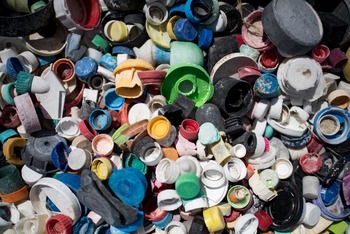 Could these bottle caps become part of a winning vessel? (Credit: NOAA).
Apply the engineering method and help your students become environmental stewards as you repurpose recyclables into seaworthy vessels! Master buoyancy, engineering, and physics obstacles to race your boat creations to victory.
The Recycle Regatta is a free, fun, hands-on competition for K-12 students to participate in from anywhere! Students build a model sailboat from recycled and repurposed materials and race to victory while discovering engineering, mathematics, sailing, buoyancy, and stewardship.
Classrooms, boating centers, and community organizations are invited to host their "Regatta" and submit their students’ entries!
Contest closes April 30, 2024
Best for: Elementary School, Middle School, High School, Non-formal Audiences
Applicable Region(s): Anywhere
 Enter NAMEPA's art contest with art that creatively depcits the relationship between maritime safety, technology innovation, and environmental sustainability (Credit: NAMEPA).
Students in grades K-12 are invited to participate in the Annual Bilingual Calendar Art Contest sponsored by the North American Marine Environment Protection Association (NAMEPA), the United States Coast Guard, and the Inter-American Committee on Ports of the Organization of American States. Submissions will be accepted from youth across the Americas (North America, Central America, South America, and the Caribbean) through May 3, 2024.
Students are asked to submit an original poster that creatively depicts the relationship between maritime safety, technology innovation, and environmental sustainability in the context of preserving the marine environment.
Contest closes May 3, 2024
Best for: Elementary School, Middle School, High School, Non-formal Audiences
Applicable Regions: All U.S. States and Territories, Central America, South America, Caribbean
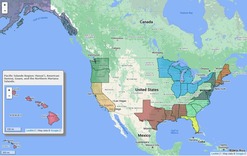
Check out marine debris projects around the country at the "In Your Region" page.
|
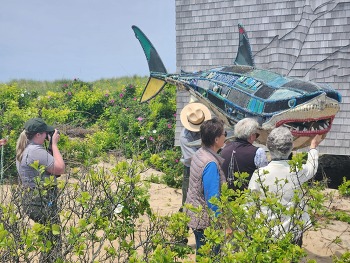 Sugar the Atlantic white shark, a sculpture made of recovered marine debris located at Cape Cod National Seashore (Credit: NOAA).
Woods Hole Sea Grant and the Woods Hole Oceanographic Institution are excited to collaborate with Sea Education Association on the Ocean STEAM Powered Women (O-STEAM) Fellowship, a competitive, week-long, no-cost, residential fellowship in Woods Hole for a cohort of young women from Massachusetts currently in their sophomore or junior year of high school. This fellowship aims to promote diversity and expose young women to a variety of careers in science, technology, engineering, art, and mathematics (STEAM).
O-STEAM student fellows will work with a predominantly female team of researchers to explore a variety of STEAM-related activities. The team will explore challenges that are unique to women in science. In seeing themselves represented, our teens can gain a sense of belonging.
Best for: High School (sophomores and juniors only)
Applicable Region(s): Northeast (Massachusetts Only)
 Beads and debris on a storm drain the morning after Mardi Gras can cause blockage and increase street flooding when it rains (Credit: Plastic Free Gulf Coast Initiative).
Applications are now open for a $5 million funding opportunity to support place-based learning efforts to increase the scientific and environmental literacy and problem-solving skills of children and youth in the Gulf of Mexico region.
The National Academies of Sciences, Engineering, and Medicine’s Gulf Research Program will fund grants of $75,000 or more to support projects that engage children and youth in place-based educational activities that foster the development of the scientific and environmental skills, competencies, and capabilities that are critical to solving complex issues in the Gulf now and into the future. Proposals will be accepted from nonprofit, state, and local entities, excluding federal agencies, which support educational, service, and/or coordination activities for children and youth in the K-8 grade range.
Best for: Educators
Applicable Region(s): Gulf of Mexico
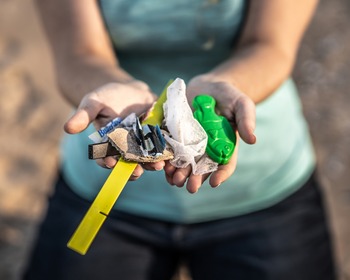 Marine debris found on the shores of Lake Huron (Credit: Rick Houchin Photography).
Applications are now open for Inland Seas Education Association's 2024 Great Lakes Watershed Field Course!
The Great Lakes Watershed Field Course is a 4-day free professional development experience for teachers from throughout the Great Lakes region and runs from August 6-9, 2024, in Suttons Bay, MI on the beautiful shores of Lake Michigan. Training in the course includes watershed and environmental concepts, place-based education and environmental education pedagogy, and time for curriculum development.
Best for: Educators
Applicable Region(s): Great Lakes
 Celebrate spring with these colorful critters made from repurposed cardboard rolls (Credit: NOAA).
Spring is nearly here! Celebrate with your students by creating these colorful critters out of repurposed cardboard rolls. They'll make great props for read-alongs, life cycle lessons, or rainy day crafting!
Carl the Caterpillar Directions:
Supplies Needed:
- Paper towel or toilet paper roll
- Strips of colorful paper, paints, or tissue paper
- Small piece of cardboard
- Glue (I found that a hot glue gun worked a bit more reliably than regular white glue. If using hot glue, ensure that gluing is completed by adults or with supervision.)
- Pipe cleaners
- Pom poms or other decoration (optional)
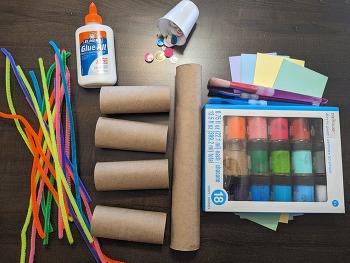 Get your supplies together! I ended up using hot glue and collecting some twigs for the butterflies later on (Credit: NOAA).
Steps:
- Cut out paper strips or other decoration for the roll and glue them on.
- Twist pipe cleaners around the body to form legs.
- Cut a small circle the size of the end of the roll out of the extra piece of cardboard and draw a face.
- Glue the face onto the end of the roll. Place a pipe cleaner for antennae behind the cardboard face and secure it when you glue.
 Carl the completed caterpillar! (Credit: NOAA).
Mo and Maurice the Butterflies
Supplies Needed:
- Toilet paper or paper towel roll(s)
- Strips of colorful paper, paints, or tissue paper
- Small twigs
- Glue
- Pipe cleaners (or smaller twigs) for antennae
- Pom poms or other decoration (optional)
Steps:

1. Cut four equal pieces (around 1 inch wide) from each roll. Bend them at both ends to make a "wing" shape.
|

2. Paint the twig bodies (and antennae, if you're using them) black.
3. Paint, draw, or glue designs onto your butterfly wings, and let them dry.
|
4. Glue it all together! Glue the antennae (two thin twigs or pipe cleaners) onto the twig body and then glue the wings onto either side of the body. Let it dry.
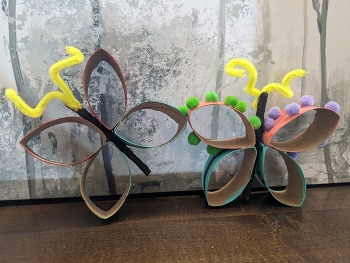 It turns out that caterpillars aren't the only things that turn into butterflies! Mo and Maurice started out as humble toilet paper rolls (Credit: NOAA).
Shoutout to PBS Kids for inspiring these crafts!
Looking for a craft from a previous newsletter? Check out our NOAA Marine Debris Program Newsletter Archive page to revisit all of our past activities.
Interested in more ways to help prevent marine debris at home, at school, or at the store? Dive into all kinds of ideas on our How to Help page.
Have any feedback on our content?
Contact us at marinedebris.web@noaa.gov if you have any questions, ideas, or hopes for our marine debris materials.
Subscribe to the NOAA Marine Debris Program Education Newsletter
Subscribe to the NOAA Marine Debris Program Monthly Newsletter
Subscribe to the Marine Debris Blog
|